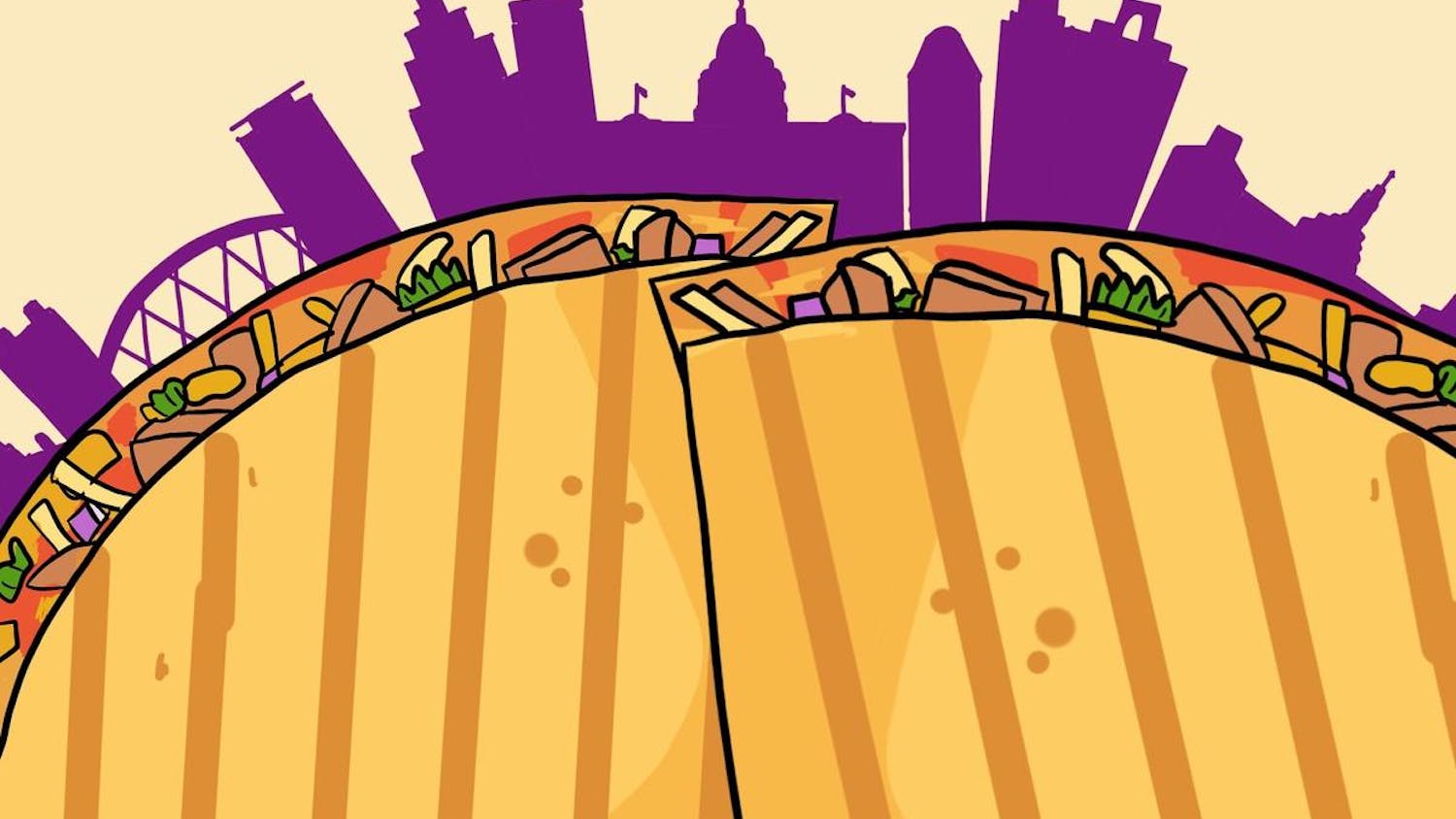“The Wall,” an exhibit by Gregory Thielker that examines the partitions along the U.S.-Mexico border, opened Thursday in the Cohen Gallery in the Granoff Center for the Creative Arts as well as the first and third floors of the Watson Institute for International and Public Affairs. The work emerged as a result of interdisciplinary collaboration between Thielker, a New York City-based visual artist, and Paja Faudree MFA’92, associate professor of anthropology.
“There’s a need to challenge the expected images and stories that are told about the border, about migration,” Thielker said. “We’re very familiar with seeing a certain kind of imagery through photojournalism.”
The exhibit in the Cohen Gallery features hyperrealistic, monochromatic paintings that depict the border in all of its varied forms, as well as sculptures composed of objects left by people crossing the border that Thielker collected on-site, Thielker said. These objects include backpacks, water bottles, clothes and pieces of fabric worn by people around their shoes to conceal their footprints, the artist added.
Over the past two years, Thielker has criss-crossed various segments of the nearly 2,000-mile U.S.-Mexico border, creating sketches along the way. Faudree joined Thielker in January to conduct ethnographic interviews with people living along the Rio Grande Valley and adjacent areas of the border lining Texas, including undocumented immigrants, border patrol agents, artists and researchers, he added.
Beyond just the Mexican and Central American immigrants they expected to meet, Faudree and Thielker met people from all around the world seeking asylum, including people from Cuba and Ukraine.
“People talk a lot about the border, talk about immigration,” Faudree said. “But when you’re actually spending time on the border, there’s a lot of variability.”
When he approached his subjects, Thielker shared his sketchbook, which is now on display at the Cohen Gallery. One woman at a Catholic refugee center broke down crying upon seeing an image of barbed wire in his sketchbook, he said. “She talked about her own experience crossing, and it was very emotional,” he added. “She could tell that I was really invested, … (that I was) not just going to be writing something up and walking away.”
While Thielker’s paintings in the Cohen Gallery explore the border’s visual and aesthetic properties, the exhibit in the Watson Institute imbues the project with a sense of humanity, Faudree said. The Watson Institute portion displays photographs taken by both Thielker and Faudree, as well as excerpts from interviews the two conducted.
“It was about giving space ... for the voices of people who can’t be here because they can’t travel past the checkpoint,” Faudree added. The exhibit tries to “hold these different parts of the story against each other.”
Thielker and Faudree held a public discussion about their collaborative research at the Joukowsky Forum last Wednesday in addition to a reception the next day celebrating the exhibit’s opening in the Cohen Gallery, Thielker said. Before arriving at the University, “The Wall” showed at the Castor Gallery in New York City and at Clark University in Worcester, Massachusetts, he added. The Brown Arts Initiative chose Thielker’s exhibit from a pool of 300 submissions because it was “collaborative and engaged” and demonstrated the artist’s deep commitment to connecting with audiences at the University, said Program Manager Sophia Lacava-Bohanan MA’15.
“I normally work in areas of contested territory, areas where there’s a history of conflict,” Thielker said. According to the artist’s website, his past work has investigated other sites around the world: “(Un)governed Spaces” depicts the rich and complex history of the Shomali Plain in Afghanistan, while “Highway” touches upon the modernization of the ancient Grand Trunk Road in India.
“The Wall” is “more than just art, it’s more than just ethnography,” Thielker said. “It’s important to understand the ambiguity” of the border’s manifold nature.
The exhibit will be on display until March 22.

ADVERTISEMENT




